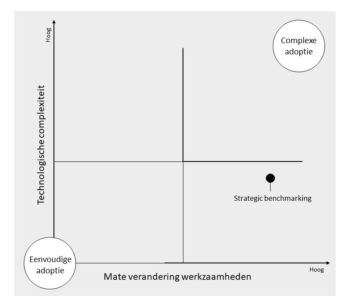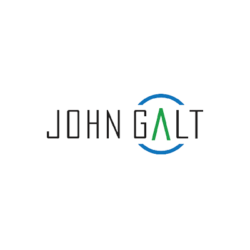Technology for strategic benchmarking
Solventure’s technology enables companies to achieve strategy-driven sales & operations planning (S&OP). The patented technology has been developed in response to the need for companies to be able to include the financial aspect in their strategic decision-making in order to maximize their profitability.
By Marysa Vos
Many companies are already involved in benchmarking, but not always correctly, according to Solventure. Common pitfalls include focusing on just one KPI, always wanting to be best-in-class and not sticking to the chosen strategy. For example, most companies mainly want to know how much stock they need. Strategic benchmarking answers this question in two ways: 1) by looking at the competition and ‘the-best-in-class’, and 2) by looking at the company’s strategy and the associated targets. Bram de Smet, CEO of Solventure, illustrates this with examples from Aldi and Albert Heijn. He underlines that both the number of items the retailers have on their shelves and their inventory levels are linked to their chosen strategy. “Aldi’s strategy is focused on the lowest price and lowest costs, while Albert Heijn aims to offer a complete range and top-class service. So it’s obvious that Aldi needs to hold less stock because it has fewer items on its shelves,” explains De Smet.
Variables
“Decisions about inventory levels, what needs to be shipped or stored and how much needs to be produced – these are all variables in the supply chain that have a direct impact on profitability,” comments Michel van Buren, owner of Solventure. Referring back to the examples of Aldi and Albert Heijn, he says: “Aldi not only has lower inventory levels than Albert Heijn, but will also have lower margins because of its lowest-price approach. But that doesn’t necessarily have negative consequences for Albert Heijn.” De Smet adds: “Albert Heijn will have more cash tied up in inventory, but if it executes the strategy well then the consumer will also pay a premium for that.”
By combining the margins, stock levels and the chosen strategy, the technology reveals which market a company is in and which other companies are its direct competitors. When companies also upload their own data per business unit to it, the profitability can be calculated from start to finish and this can also be benchmarked against the competition. In a nutshell, the strategic benchmarking technology links a company’s strategy to its KPIs, which makes it easier to arrive at the right decisions in the S&OP process.
Innovation adoption matrix
 To indicate the complexity of the technological possibilities used while also illustrating the extent to which Solventure’s strategic benchmarking technology changes how people work, it has been positioned in the innovation adoption matrix. The lower a tool or technology scores, the easier it is for companies to adopt it and integrate it into their business, and vice versa; if a company has developed a product or service that scores highly on technological complexity and which requires substantial changes in the daily workflow, adoption will be more difficult. Furthermore, highly complex tools and technologies often still have to prove their worth in practice. A technology such as blockchain is a good example of this.
To indicate the complexity of the technological possibilities used while also illustrating the extent to which Solventure’s strategic benchmarking technology changes how people work, it has been positioned in the innovation adoption matrix. The lower a tool or technology scores, the easier it is for companies to adopt it and integrate it into their business, and vice versa; if a company has developed a product or service that scores highly on technological complexity and which requires substantial changes in the daily workflow, adoption will be more difficult. Furthermore, highly complex tools and technologies often still have to prove their worth in practice. A technology such as blockchain is a good example of this.
The technology in the matrix
Solventure makes use of technological possibilities by enabling companies to upload their own data from various business units into the technology. As a result, companies can compare their performance against that of their competitors based on accurate data. However, the number of business units and the wide variety of areas in which companies are benchmarked makes the technology somewhat complex. Even so, it is relatively simple to use the technology once S&OP has been implemented, plus the technology ensures that companies can make well-founded S&OP-related decisions based on the chosen strategy – providing that the CEO, CFO, VP Supply Chain and the other operational employees understand the new reality, that is. Taking the strategy into account when making planning decisions enables companies to avoid pitfalls such as focusing on becoming best-in-class based on a single KPI. Because the responsibility for achieving a truly strategy-driven S&OP process lies with the employees, this technology has been placed on the right-hand side of the matrix.










